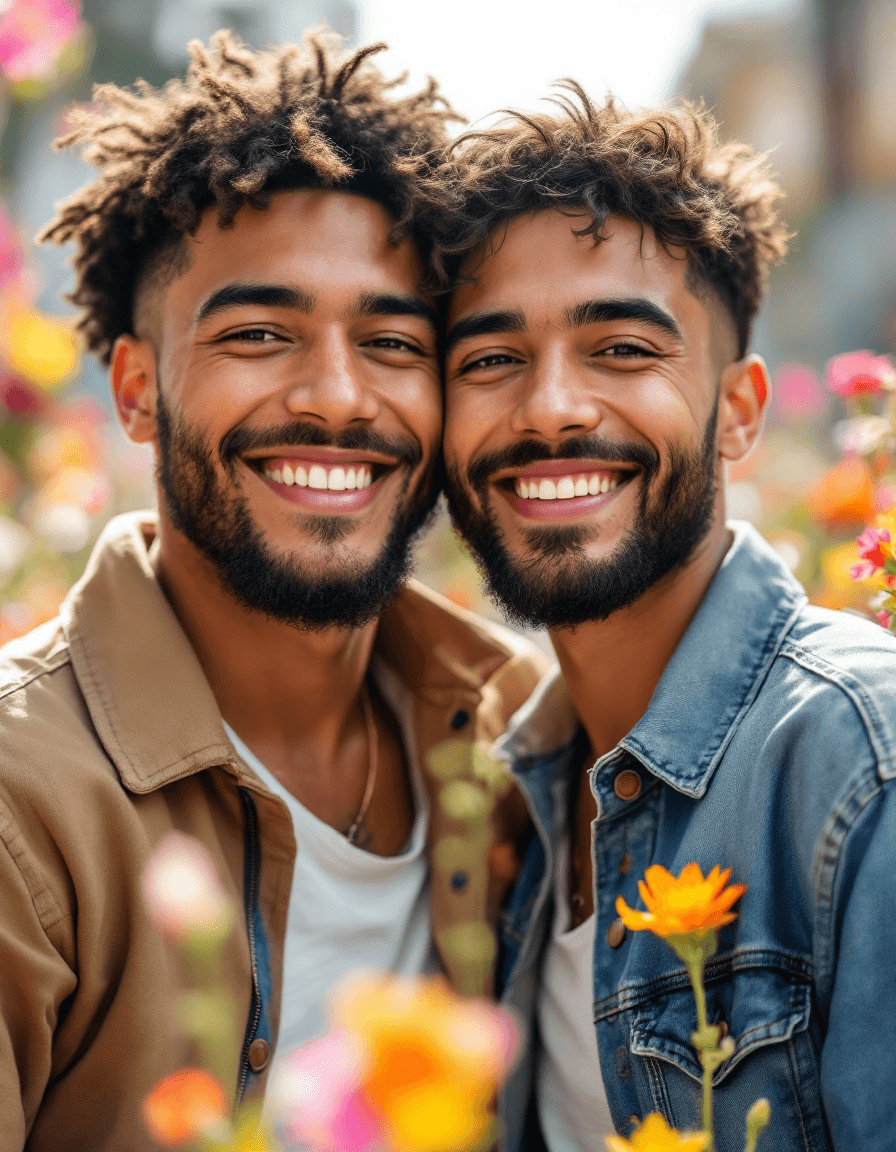Panromantic is a term that describes people who are emotionally attracted to all genders, regardless of their gender identity. Unlike other orientations that may focus on one specific gender, panromanticism emphasizes attraction to individuals based on their personality and emotional connection rather than gender. Understanding the panromantic meaning is essential for respecting diverse romantic orientations and fostering inclusive relationships. A panromantic person may experience feelings of love and romantic attraction for anyone, regardless of gender identity.
Section 1: What Does Panromantic Mean?
At its core, panromantic describes someone who is attracted to all genders. This attraction is primarily romantic rather than sexual, which distinguishes panromanticism from pansexuality.
- Emotionally attracted to all genders: Panromantics form romantic connections based on emotional intimacy and compatibility.
- Regardless of their gender identity: A panromantic person does not limit their romantic feelings to any one gender; attraction is directed toward the person as a whole.
- Experience feelings of love: Panromantics may experience feelings of love for individuals of any gender, emphasizing emotional bonds over physical characteristics.
It’s important to remember that being panromantic does not automatically imply sexual attraction, though some panromantic people are also pansexual.
Section 2: Panromantic vs. Pansexual
While the terms sound similar, panromantic and pansexual are distinct:
- Panromanticism focuses on romantic attraction. This means a person may feel emotionally drawn toward anyone, regardless of gender, forming romantic bonds without necessarily seeking sexual involvement.
- Pansexuality focuses on sexual attraction. A pansexual person may feel sexually attracted to all genders, but romantic feelings are not implied.
- Overlap: Some individuals identify as both panromantic and pansexual, experiencing both romantic and sexual attraction across all genders.
Understanding these distinctions helps prevent misconceptions about panromantic identity and ensures that people’s orientations are respected.
Section 3: Romantic Attraction and Identity
Romantic attraction is central to the panromantic experience. Unlike sexual attraction, which is physical, romantic attraction involves emotional connection, affection, and desire for companionship.
- Romantic orientation: Panromantic is a type of romantic orientation, which describes the patterns of romantic attraction one feels toward others.
- Emotional connection: A panromantic person values emotional intimacy and bonds that go beyond gender, often prioritizing personality and compatibility.
- Romantic feelings: Panromantics may develop romantic feelings toward someone of any gender, making their romantic orientation fluid and inclusive.
This orientation highlights that love is not confined by gender and that meaningful connections can transcend societal expectations.
Section 4: Panromantic Experiences
Panromantic people may experience a wide range of feelings and attractions:
- May experience feelings of love for multiple genders, sometimes simultaneously or sequentially.
- Experience feelings of love that are deeply emotional, emphasizing care, commitment, and empathy over physical attributes.
- Emotional connection: For panromantics, emotional intimacy often drives attraction, making connections meaningful and lasting.
- Attracted to all genders: Panromantics do not exclude any gender from their potential romantic interests.
These experiences can vary widely between individuals, and panromanticism allows for a spectrum of romantic possibilities.
Section 5: Understanding Gender Identity in Panromanticism
Gender identity plays a key role in how panromantic people navigate relationships:
- Gender identity matters: Panromantics are attracted to individuals regardless of their gender identity, meaning attraction is not limited by societal gender norms.
- Gender identities: Recognizing diverse gender identities, including non-binary, transgender, and genderfluid people, is central to understanding panromantic attraction.
- Regardless of gender: Panromantics embrace romantic attraction without constraints, celebrating diversity and inclusion in relationships.
By respecting gender identity, panromantic people ensure that their romantic connections are authentic and meaningful.
Section 6: Signs of Panromantic Identity
People may identify as panromantic for several reasons:
- Strong emotional bonds: They feel drawn to people based on emotional compatibility rather than gender.
- Romantic flexibility: They may experience romantic attraction toward anyone, regardless of gender.
- Inclusive outlook: Panromantic individuals often prioritize understanding and accepting diverse gender identities.
- Personal self-discovery: Identifying as panromantic can help someone understand their romantic orientation and navigate relationships more confidently.
A panromantic person may also explore their romantic orientation alongside their sexual orientation to gain a holistic understanding of their identity.
Section 7: Panromantic vs. Other Romantic Orientations
Panromanticism is one of many romantic orientations, each describing unique patterns of attraction:
- Heteroromantic: Romantic attraction toward the opposite gender.
- Homoromantic: Romantic attraction toward the same gender.
- Biromantic: Romantic attraction to two genders, typically male and female.
- Panromantic: Attraction regardless of gender, emphasizing inclusivity and fluidity.
This distinction highlights that panromanticism differs from other orientations in its universal approach to romantic attraction.
Section 8: Relationships and Panromanticism
Navigating relationships as a panromantic person may involve unique experiences:
- Romantic partners: Panromantic individuals can have romantic partners of any gender, forming bonds based on love, compatibility, and emotional connection.
- Emotional intimacy: Prioritizing feelings of love and connection often defines the depth and quality of panromantic relationships.
- Communication: Open conversations about identity and orientation help partners understand and respect each other’s romantic needs.
- Challenges: Panromantic individuals may encounter misunderstandings or stereotypes, making education and awareness crucial.
Understanding these dynamics helps create healthier, more fulfilling relationships.
Section 9: Panromanticism and Mental Health
Recognizing and embracing panromantic identity can impact mental health positively:
- Ověřování: Accepting one’s panromantic identity reduces stress and confusion about romantic feelings.
- Community support: Connecting with panromantic and LGBTQ+ communities provides a sense of belonging.
- Mental health benefits: Awareness and acceptance of one’s romantic orientation support emotional well-being and resilience.
- Challenges: Panromantic individuals may still face societal pressure or misunderstanding, which can affect their mental health if not addressed.
Seeking professional help or joining supportive networks can improve emotional health and foster self-confidence.
Section 10: Panromantic People and Sexual Orientation
Although panromanticism primarily concerns romantic attraction, it often intersects with sexual orientation:
- Sexual attraction: Some panromantic people are sexually attracted to all genders, while others may be asexual or have preferences that do not align with their romantic attraction.
- Sexual orientation: Distinguishing between sexual orientation and romantic orientation is important for understanding one’s overall identity.
- Experiencing romantic vs. sexual attraction: A panromantic person may feel romantically drawn to someone without sexual interest, or vice versa.
This distinction helps clarify the multifaceted nature of human attraction and identity.
Section 11: How to Support Panromantic People
Supporting someone who identifies as panromantic involves respect, understanding, and openness:
- Use correct terminology: Respect the labels and pronouns that reflect their identity.
- Listen actively: Understand their experiences, feelings, and romantic preferences without assumptions.
- Educate yourself: Learning about romantic and sexual orientations can reduce misunderstandings.
- Promote inclusion: Encourage environments where diverse identities, including panromanticism, are acknowledged and valued.
Respect and support contribute to healthier relationships and stronger emotional bonds.
Section 12: Common Misconceptions About Panromanticism
Several myths surround panromantic identity:
- It’s the same as pansexuality: While they can overlap, panromanticism focuses on romantic attraction, not necessarily sexual attraction.
- It means attraction to everyone: Panromantics do not feel compelled to be attracted to everyone; they simply have the potential for attraction regardless of gender.
- It’s a phase: Panromanticism is a valid romantic orientation, not a temporary stage or trend.
Clearing misconceptions fosters understanding and acceptance of panromantic individuals.
Závěr
The panromantic meaning centers on the capacity to be emotionally and romantically attracted to all genders, regardless of gender identity. Panromantic people may experience feelings of love, form romantic partnerships, and build deep emotional connections without constraints imposed by gender. Recognizing panromanticism as a legitimate romantic orientation helps create inclusive communities and supports the emotional well-being of individuals across the spectrum of human attraction. Whether in friendships, romantic relationships, or broader society, understanding panromantic identity encourages respect, empathy, and celebration of diversity.













